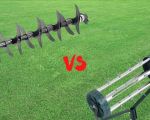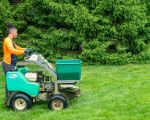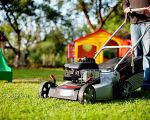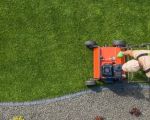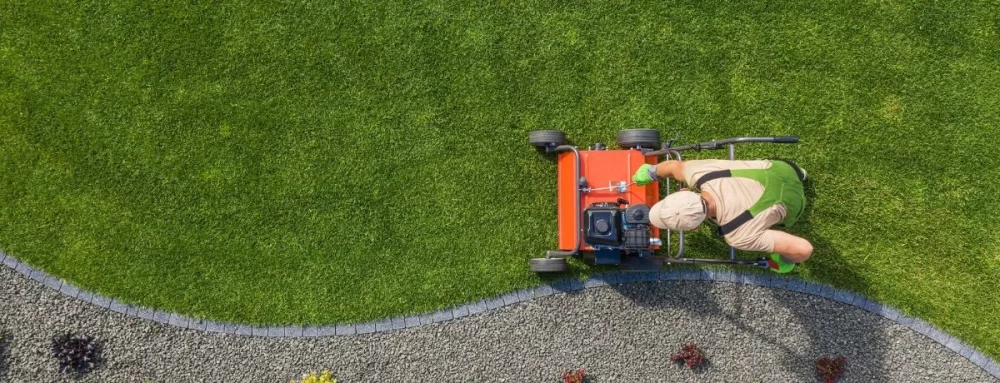
- Importance-of-Pesticide-Free-Lawn-Care
- Understanding-Your-Lawn-Soil-and-Grass
- Natural-Methods-to-Promote-Lawn-Health
- Common-Challenges-and-How-to-Handle-Them
- How-Professional-Lawn-Care-Services-Can-Help
1. The Importance of Pesticide-Free Lawn Care
Maintaining a lush, green lawn without relying on pesticides is not just a trend but a vital step toward a healthier environment and safer outdoor spaces. Pesticides, while effective at controlling weeds and pests, can lead to soil degradation, water contamination, and harm to beneficial insects and wildlife. Families with children and pets often prefer pesticide-free lawns to avoid potential health risks. Beyond environmental and health concerns, many gardeners find that natural lawns promote biodiversity and develop greater resilience over time.
For example, a community initiative in Portland, Oregon, successfully converted dozens of lawns into pesticide-free zones by educating residents on sustainable practices. This project saw a notable increase in pollinator presence and healthier soil composition within just two growing seasons, proving that pesticide-free care is both achievable and rewarding.
2. Understanding Your Lawn: Soil and Grass Essentials
Before implementing any lawn care routine, it’s essential to understand your soil type and grass variety. Healthy soil rich in organic matter supports stronger root systems and better nutrient uptake, making lawns naturally more resistant to diseases and pests. Conducting a soil test is a practical first step, revealing pH levels and nutrient deficiencies that can be corrected through natural amendments like compost or organic fertilizers.
Grass species also play a crucial role. Cool-season grasses such as Kentucky bluegrass or fescues thrive in northern climates, while warm-season grasses like Bermuda or Zoysia are better suited to southern regions. Selecting the right grass variety reduces the need for chemical interventions and helps the lawn maintain its health naturally.
2.1 Soil Health and Aeration
Compacted soil suffocates roots and encourages shallow root growth. Regular aeration breaks up compacted layers, improving air, water, and nutrient penetration. Many homeowners find that aerating their lawns once a year significantly boosts lawn vitality without pesticide use.
2.2 Organic Matter and Mulching
Adding organic matter enhances soil structure and water retention. Mulching grass clippings back into the lawn returns nutrients and reduces the need for synthetic fertilizers. This simple practice feeds the soil and encourages a self-sustaining lawn ecosystem.
3. Natural Methods to Promote Lawn Health Without Pesticides
Achieving a healthy lawn without pesticides involves several integrated strategies focusing on prevention, nourishment, and natural pest control.
3.1 Proper Mowing Techniques
Cutting grass at the correct height is critical. For most lawns, maintaining a height of 2.5 to 3 inches shades the soil, reducing weed seed germination and conserving moisture. Avoid mowing more than one-third of the grass blade length at a time to prevent stress.
3.2 Watering Wisely
Overwatering can weaken grass and promote fungal diseases. Deep, infrequent watering encourages deep root growth, making your lawn more drought-resistant and less prone to pests.
3.3 Encouraging Beneficial Insects
Ladybugs, spiders, and ground beetles naturally control lawn pests. Planting flowering borders and avoiding broad-spectrum insecticides support these helpful allies in your yard’s ecosystem.
3.4 Natural Pest and Weed Control
Hand-pulling weeds or using natural herbicides like vinegar solutions can manage problem areas without harmful chemicals. For pest control, introducing nematodes or using biological products containing Bacillus thuringiensis (Bt) targets specific pests safely.
3.5 Fertilizing Organically
Organic fertilizers derived from compost, bone meal, or seaweed provide essential nutrients slowly and improve soil health over time, unlike synthetic fertilizers that may cause nutrient imbalances.
4. Common Challenges and How to Handle Them Naturally
Even with the best natural care, challenges arise. Weeds, pest infestations, and disease outbreaks can test your patience. However, understanding the underlying causes helps manage these problems effectively.
4.1 Dealing with Persistent Weeds
Persistent weeds often indicate underlying issues such as poor soil health or improper mowing. Improving these factors naturally reduces weed encroachment over time. In areas with stubborn weeds, thickening the lawn through overseeding or aeration helps crowd them out.
4.2 Handling Pest Outbreaks
Spot treatments using natural controls combined with encouraging predators provide a balanced solution. For example, a homeowner in New England managed a grubs outbreak by applying beneficial nematodes and planting pollinator-friendly plants to attract natural enemies of pests.
4.3 Preventing Lawn Diseases
Diseases often thrive in stressed lawns. Proper watering, avoiding excess nitrogen, and mowing with sharp blades reduce disease incidence. When disease appears, removing infected areas and improving lawn vigor can halt its spread.
5. How Professional Lawn Care Services Can Help You Maintain a Healthy Lawn Naturally
While DIY natural lawn care is effective, professional lawn care services offer expertise and tailored solutions to keep your lawn thriving without pesticides. Professionals can perform detailed soil analyses, recommend appropriate grass types, and provide organic fertilization and pest control programs customized to your lawn’s needs.
At Lawn Care Services, you can find expert guidance and products designed for sustainable lawn maintenance. Whether you need advice on natural pest control or organic fertilizers, our team helps you maintain a beautiful, pesticide-free lawn that you can enjoy all year round.
Investing in natural lawn care is investing in the future of your garden and environment. With patience, proper care, and the right support, you can achieve a lush, healthy lawn without the risks associated with pesticides.


